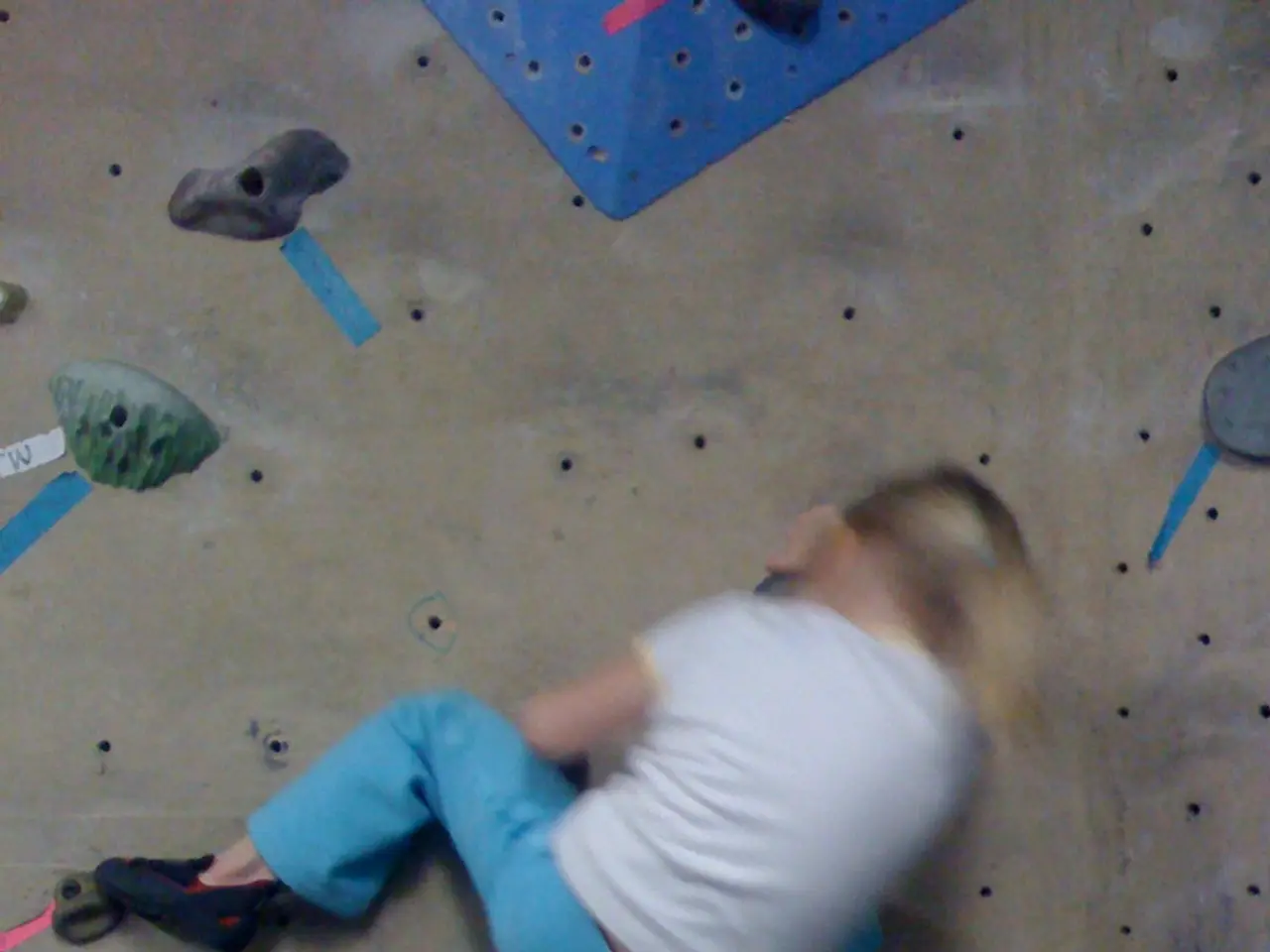Exploring Recurring Actions in Adults: A Deep Dive into Repetitive Patterns
Repetitive behaviors, such as hand-flapping, echolalia, or sensory-seeking activities, can be a common occurrence in adults, particularly those living with neurodevelopmental, neurological, or psychiatric conditions. These behaviors, known as motor, verbal, and sensory stereotypies, can significantly impact an individual's daily life, social interactions, and overall well-being.
Types of Stereotypies
Motor stereotypies involve repetitive body movements like hand-flapping, rocking, or pacing. Verbal stereotypies consist of repetitive speech patterns, including echolalia (repeating words/phrases), perseveration on certain topics, or repetitive vocalizations. Sensory stereotypies involve repetitive sensory-seeking or avoidance behaviors, such as rubbing textures, staring at lights, or repetitive touching.
Causes of Stereotypies
Stereotypies are commonly associated with conditions such as autism spectrum disorder (ASD), Tourette syndrome, intellectual disabilities, and certain genetic syndromes. Neurological factors, including impaired inhibitory control and abnormal sensory processing circuits, play a significant role. Environmental factors, like exposure to toxins, viral infections, or drugs during development, may also contribute. Psychiatric conditions like psychosis and obsessive-compulsive disorder (OCD) also show stereotyped behaviors. Adult-acquired stereotypy often arises from tardive syndromes triggered by long-term neuroleptic use.
Impacts of Stereotypies
Motor stereotypies can provide sensory stimulation or emotional regulation, but persistent stereotypies can interfere with adaptive functioning and social integration. Verbal stereotypies can impair effective communication, limiting language complexity and impacting social interactions. Sensory stereotypies reflect altered sensory processing and may lead to heightened sensory sensitivity or avoidance, impacting daily functioning and quality of life.
Social stigma around visible stereotypies can increase anxiety and reduce individuals’ willingness to perform these behaviors publicly, sometimes worsening their distress and sensory overload coping mechanisms. In psychiatric populations, stereotypies and mannerisms may mark severity of illness or medication side effects, affecting treatment outcomes.
Managing Stereotypies
Managing self-injury requires a comprehensive strategy that integrates awareness, assessment, and targeted support. Seeking professional guidance from behavioral therapists, occupational therapists, or specialists in the field ensures access to tailored interventions and strategies for managing repetitive behaviors. Creating supportive environments that align with individuals' sensory needs contributes to reducing the frequency of repetitive behaviors.
Behavioral interventions like positive reinforcement, redirection, and functional analysis are deployed to modify behavior effectively. Sensory-based interventions address the impact of sensory sensitivities and aim to provide sensory stimulation or accommodate sensory needs. Pharmacological interventions may be considered in cases where factors such as anxiety or stress significantly contribute to repetitive behaviors and self-injury.
Understanding the unique triggers, functions, and impacts of repetitive behaviors for each individual is key to effective support. Comprehensive assessment is necessary to delve into the underlying causes, potential challenges, and individual needs of repetitive behaviors. Collaboration with mental health professionals, behavioral therapists, and other specialists is essential in developing and implementing tailored interventions.
In conclusion, adult stereotypies are complex phenomena with significant neurological, developmental, and environmental contributions. They affect motor control, communication, sensory experiences, and social functioning, often serving both regulatory and maladaptive roles depending on context. By understanding and addressing these behaviors, we can help individuals live more fulfilling, integrated lives.
[1] Mirenda, P. (2010). Stereotypic Behaviour in Autism: An Overview. Journal of Autism and Developmental Disorders, 40(3), 309-320. [2] Abramowitz, J. S., Taylor, S., & McKay, D. (2011). Obsessive-Compulsive Disorder. Lancet, 377(9779), 1515-1526. [3] Vissers, L. E., & van Engeland, H. (2011). The Neurobiology of Stereotypies: From Basic Mechanisms to Clinical Relevance. Neuropsychology, Development, and Cognition, 21(2), 104-117. [4] Kozak, K. L., & Mirenda, P. (2010). Language and Communication in Autism Spectrum Disorders. Annual Review of Psychology, 61, 379-403. [5] Bauman, M. L., & Kemper, L. J. (2005). Environmental Toxins and Autism. Environmental Health Perspectives, 113(1), A16-A23.
- Understanding that stereotypies include motor, verbal, and sensory repetitive behaviors, the focus on mental health becomes crucial for managing these symptoms, particularly in individuals living with conditions such as autism spectrum disorder, Tourette syndrome, and obsessive-compulsive disorder (OCD).
- Mental-health professionals may use a combination of behavioral, sensory-based, and pharmacological interventions to address the unique triggers, functions, and impacts of stereotypies on an individual's mindset, communication, social interactions, and overall well-being.
- Stereotypies can co-occur with anxiety and other psychiatric conditions, necessitating a comprehensive approach to mental health care that considers both the neurological and environmental factors contributing to these behaviors. Collaboration among professionals in health-and-wellness, including behavioral therapists, occupational therapists, and psychiatrists, can help develop tailored treatment plans to improve the quality of life for those affected by stereotypies.




